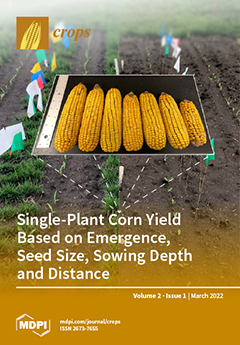Open AccessEditor’s ChoiceArticle
GWAS for Stripe Rust Resistance in Wild Emmer Wheat (Triticum dicoccoides) Population: Obstacles and Solutions
by
May Tene, Elina Adhikari, Nicolas Cobo, Katherine W. Jordan, Oadi Matny, Isabel Alicia del Blanco, Jonathan Roter, Smadar Ezrati, Liubov Govta, Jacob Manisterski, Pnina Ben Yehuda, Xianming Chen, Brian Steffenson, Eduard Akhunov and Hanan Sela
Cited by 20 | Viewed by 5873
Abstract
Stripe rust is a devastating disease in wheat that causes substantial yield loss around the world. The most effective strategy for mitigating yield loss is to develop resistant cultivars. The wild relatives of wheat are good sources of resistance to fungal pathogens. Here,
[...] Read more.
Stripe rust is a devastating disease in wheat that causes substantial yield loss around the world. The most effective strategy for mitigating yield loss is to develop resistant cultivars. The wild relatives of wheat are good sources of resistance to fungal pathogens. Here, we used a genome-wide association study (GWAS) to identify loci associated with stripe rust (causal agent:
Puccinia striiformis f. sp.
tritici) resistance in wild emmer (
Triticum dicoccoides) at the seedling stage, in the greenhouse, and at the adult plant stage, in the field. We found that the two major loci contributing to resistance in our wild emmer panel were the previously cloned seedling-stage resistance gene,
Yr15, and the adult-plant-stage resistance gene,
Yr36. Nevertheless, we detected 12 additional minor QTLs that additionally contribute to adult plant resistance and mapped a locus on chromosome 3AS that tentatively harbors a novel seedling resistance gene. The genotype and phenotype data generated for the wild emmer panel, together with the detected SNPs associated with resistance to stripe rust, provide a valuable resource for disease-resistance breeding in durum and bread wheat.
Full article
►▼
Show Figures





